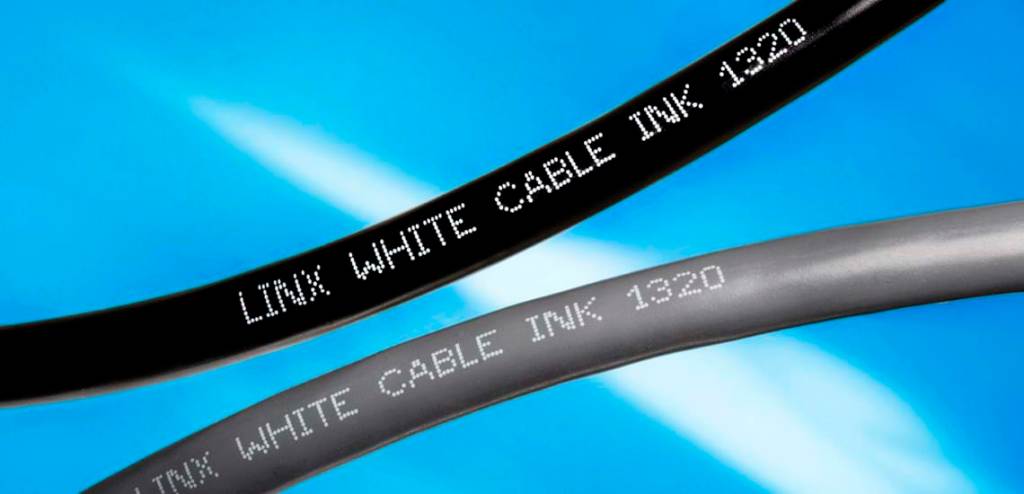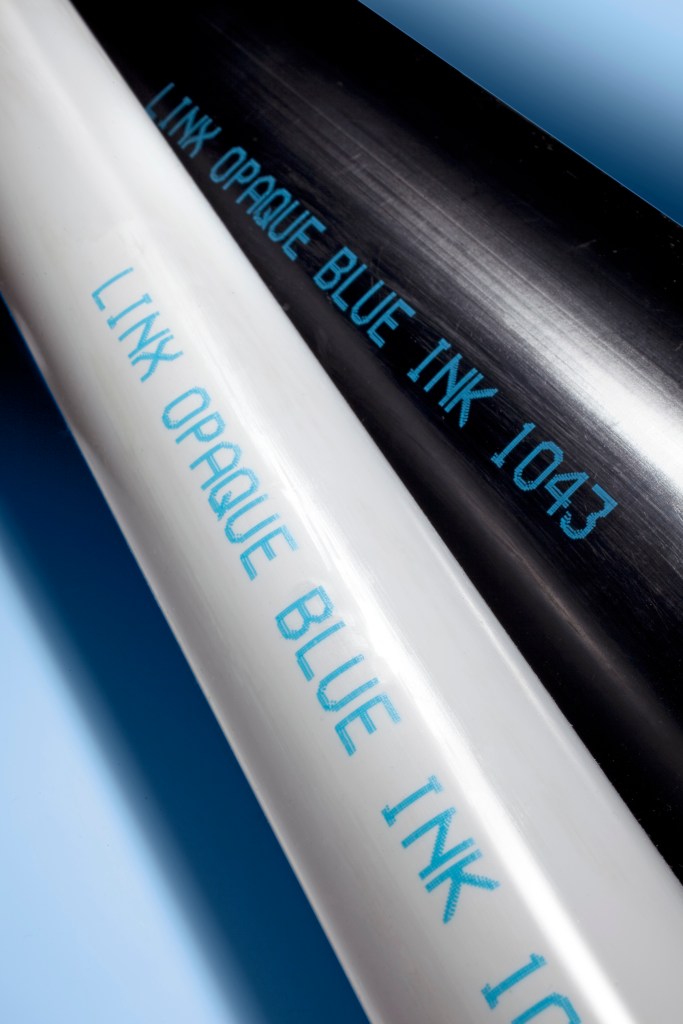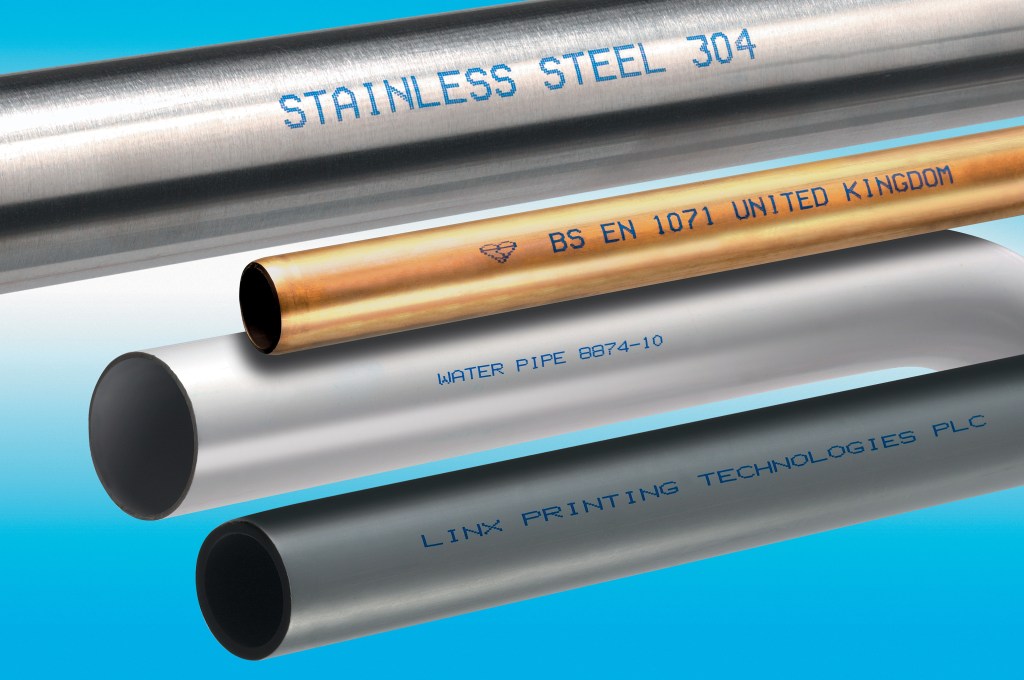Coding onto PVC pipes and PP plastics

Introduction
Polyethylene (PE) and polypropylene (PP) are the most important members of a group of polymers called polyolefins.
PE is the most widely used polymer in the world (around 80 million tonnes per year), whilst polypropylene (PP) accounts for over 50 million tonnes per year.
These polymers are used in applications spanning a multitude of industry sectors such as food packaging, automotive, pharmaceuticals, cable, wire & pipes, etc. They are used widely in industries where CIJ printers are used for coding and marking.
Their characteristics are such that effective coding and marking onto these plastics can be a challenge for manufacturers.
Polymer characteristics
Polyethylene and polypropylene have chemical structures containing only carbon and hydrogen:

To some extent, these issues can be overcome by treatment of the surface of the PE or PP by methods such as heat, corona or plasma. The surface energy of the substrate is increased from about 30mN/m to >40mN/m by these processes. The surface tension of the ink jet ink (26-28mN/m) is sufficiently lower than this, and hence the ink is able to achieve good wetting and adhesion.
However, this requires an additional process on the production line and is often not convenient or appropriate. Coding ink manufacturers therefore need to develop inks that will adhere to both treated and untreated PE and PP.
Applications
PE/PP are highly versatile as they can be easily moulded during manufacturing process to produce a wide range of forms, from thin film to rigid components, by processes such as blow moulding, injection moulding, rotational moulding, and extrusion.
PE is widely used across food packaging applications such as film, as well as non-food use such as bottles & drums, pipes and cable jackets. PE and other polyolefins are increasingly being used in place of PVC in cable applications.
PP is also widely used across multiple industry types, including rigid packaging (crates, pails, CD/DVD boxes, etc), automotive components, pipes, textiles, food packaging films, bottles, caps.
PE and PP for food packaging
It is important that food packaging has the right combination of properties; both PE and PP have properties which can fulfil the following functions:
- Easy to process into various packaging forms
- Helps to keep food fresh (barrier to air, moisture)
- Light and strong, protects food
- Convenience – easy to open and lightweight
- Resistant to acids and other chemicals
- Low intrinsic level of contaminants which could migrate into the food
- Cost effective


PE for cable
Coding onto PE cable presents a potential problem of codes transferring from one part of the cable to another when the cable is wound on the reel. If the ink does not adhere or dry effectively then this code transfer may occur, especially in high speed cable winding applications. The code may therefore become illegible and the cable either reworked or scrapped, resulting in additional costs to the manufacturer.
Additional considerations include the need for the code to stand out against the colour of the cable, so a choice of black, white or other colours is important for the cable manufacturer. Add to this the need for the code to resist chemicals during manufacture or end-use, plus regulatory drivers which affect specific chemical use in the printing inks, and the process of selecting an appropriate coding ink becomes complex.
Drivers and trends in use of PP and PE – what you need to know about coding
In addition, there are standards which affect the materials in the printers that deliver the printing ink. A myriad of pressures, both environmental and legislative, are driving the use of PP and PE in coding and packaging applications. These drivers affect both the plastic used in the product and packaging, as well as the ink used to code onto them.
Environment
There is a trend towards the use of polyolefins which are seen as having a better environmental profile than some plastics, e.g. PVC and Polycarbonate. The manufacture, use and end of life fate of polyolefins generally involve less hazardous chemical substances. PE and PP can also be widely and easily recycled; they are thermoplastic materials, which means they can be melted unlimited times and made into new products.
Neither PE nor PP are easily biodegradable (a challenge for all the commonly used plastics), although additives are now available which can accelerate compostibility. There are routes under development to manufacture PE and PP from renewable (non-petroleum based) raw materials, although this is not currently cost effective enough to be universally adopted.
Implications for coding and marking
Most manufacturers of CIJ printers supply a wide range of inks that can adhere to many materials, including PE and PP. Each material will have its own set of unique properties, and it is the skill of the chemist in creating an ink that will ensure the code stays in place, as well as meeting the multitude of environmental and legislative demands on the ink formulation. With new materials being developed to better meet these directives, manufacturers are continually developing new inks to stay ahead of the game.
PE and PP are becoming increasingly popular for food packaging applications and in the cabling industry. But due to their chemical makeup, coding onto them with ink jet printers can be tricky – codes may not adhere correctly or may become illegible through code transfer.
This doesn’t mean that coding with ink is inappropriate for PE and PP – in fact far from it. Both materials can be formed into almost any shape, so non-contact coding technology such as Continuous Ink Jet (CIJ) is ideal as the ink is literally ‘jetted’ onto the surface. Irregular shaped products can be clearly coded, and from any angle.
The above is a direct input from Dr. Richard Marsden – Chief Chemist, Linx Printing Technologies Ltd
Dr. Richard Marsden has a degree and Ph.D. in Colour Chemistry from the University of Leeds, followed by postdoctoral fellowships in Synthetic Organic Chemistry at McMaster University in Canada and Hull University, UK.
He first worked on CIJ inks for binary systems with Elmjet, before joining Linx Printing Technologies in 1990. He is a chartered chemist and member of the Royal Society of Chemistry.
